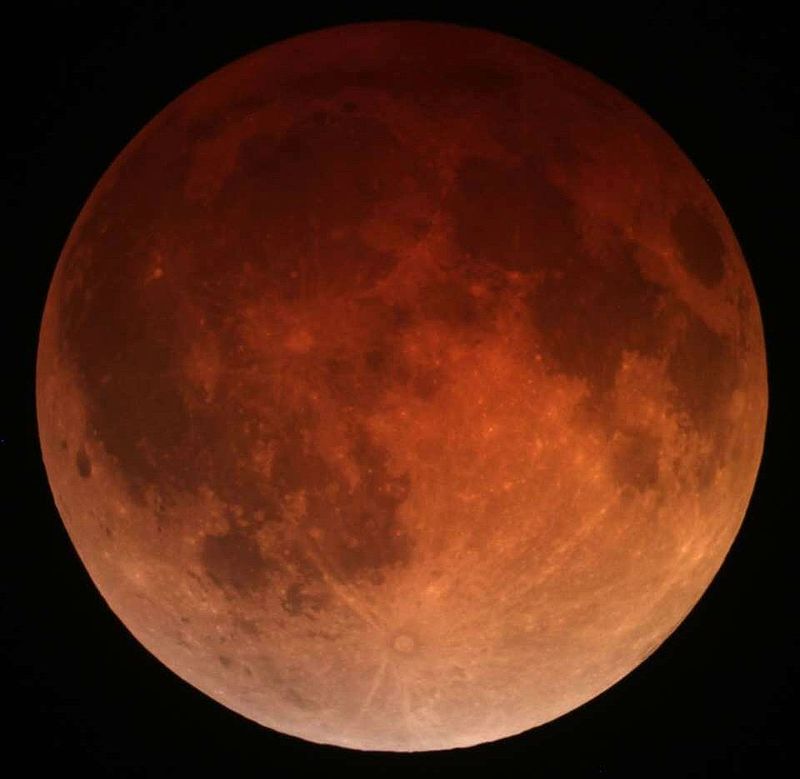
Greetings Habersham!
UPDATE 10-7-14: Still not sure entirely what to expect tomorrow morning. The HRRR wants to develop a line of thunderstorms that push quickly across the area during the eclipse, while the NAM/RAP is slower and moves it in afterwards, dissipating it and the cloud cover across the area. The GFS keeps primarily clear skies though its resolution can’t pick up on small scale features very well. Current water vapor/satellite continue to show the shortwave trough lifting away NE with high pressure building in from the south, so we can hope the line is impeded or fails to develop (the NAM has gotten progressively smaller/slower with it through the past 48 hours). I’ll update again later tonight and again in the morning as new model runs come out.
Assuming the weather cooperates, sky watchers are in for a treat this Wednesday morning as the second in a series of four total lunar eclipses is set to take place starting at 5AM. The first eclipse of the series occured this past April but unfortunately clouds obscured the view across all of Northern Georgia. Hopefully we avoid that fate this time, though an upper level disturbance pushing through the area tomorrow is certainly trying to throw a wrench in my observation plans. I’ll be updating this article with cloud cover chances as we draw closer to the event.
You may be asking: just what is a total lunar eclipse and what can I expect to see? Well, this graphic by NASA does a good job of explaining it. The Earth casts a shadow behind it as we travel through space, and occasionally part or all of the moon passes through this shadow. Total lunar eclipses always occur at a new moon when the moon is directly opposite the sun from our vantage point during its orbit around the Earth.
Due to the nature of the moons orbit, occasionally we see 4 total eclipses exactly 6 cycles apart, which we call a tetrad.
What can you expect to see? Well, for starters the normally incredibly bright moon will turn much darker. In addition, it may turn a coppery red color once the total eclipse is underway, instead of just a dull grey. This is thanks to light reflecting through the Earth’s atmosphere and onto the surface of the moon (same idea as why sunsets/sunrises are red).
The timing for this eclipse can be found below:
4:16AM- Penumbral Eclipse begins: this segment is not readily visible from Earth, though someone with sharp eyes will notice some darkening of the surface as this part of the eclipse wears on.
5:15 AM- PARTIAL ECLIPSE BEGINS: The moon will begin to move into the darkest shadow, readily observable.
6:25 AM- TOTAL ECLIPSE BEGINS: The moon will move completely into the Earth’s shadow. This is when to expect the coppery red color to appear.
6:55 AM- Midpoint of total eclipse.
7:24 AM- TOTAL ECLIPSE ENDS: The moon will begin to move out of the Earth’s shadow.
7:39 AM- Moonset: The moon will set at 7:39, making the remaining part of the eclipse unobservable to Northern GA.
So… be sure to tell all your friends about the eclipse (share this article!), and cross your fingers for clear skies. While you are out, be sure to check out Jupiter as it will be located in the eastern sky during the eclipse, as well as the constellation Orion which will be directly overhead. ~Tyler








